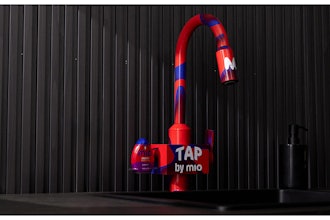New technology hits the market at a pace that’s impossible to keep up with. It seems as soon as you make an upgrade, the next month there is newer and better technology available. Think about your television, cell phone, watch, refrigerator or automobile. Go ahead, be bold and buy the latest technology. It feels great, doesn’t it? You are now the proud owner of the latest and greatest gadget. But alas, reality sets in and you realize that “state-of-the-art” is just a fleeting moment in time. Twelve months from now you will be a generation, possibly two, behind. Are you prepared to buy in again? Your new smart watch is a couple of hundred dollars. Your phone, now that could be a thousand dollars, your refrigerator several thousands and your automobile tens of thousands. When does it stop? Fortunately, or unfortunately, it never does.
Now let’s consider the plight of the manufacturer. Of course, companies want the latest and greatest capabilities for employees and machinery. Organizations want to take advantage of technology to improve safety, reliability, and productivity. However, continuous upgrades to operating assets are costly and cannot possibly be afforded on a regular basis. At some point, companies need to draw a line in the sand and say that’s going to have to be good enough for the next five, 10, 15 years, or more.
The Internet of Things (IoT) is connecting both the physical and virtual worlds together. It’s helping businesses work faster, people work smarter, and processes to be more effective across the globe. Manufacturers have to be smart about when and where they invest capital.
Take a paper mill for example. Multi-million-dollar assets are used to turn timber into pulp and turn pulp into paper and these machines are expensive to upgrade. Within a paper mill there are dozens of smaller machines, each performing a critical role. These machines are every bit as important as the de-barker, digester, headbox, dryer, and reel. Each of these devices are likely controlled by a Distributed Control System (DCS) or Programmable Logic Controller (PLC), which essentially are specialized industrial computers. Today all of these pieces of equipment have network interfaces of some sort so that machines can communicate with each other and with business systems. A fully integrated paper mill will have hundreds of connected devices spanning multiple generations of technology.
The networking needs of a manufacturing floor are very different than that of the front office. Employees in an office setting can survive a network outage for minutes, possibly hours, with minimal impact to the company’s bottom line. While they may lose access to email and printers, the company continues to generate revenue as long as production equipment is able to produce a saleable product.
Conversely, manufacturers cannot tolerate network outages on the plant floor. On the plant floor time truly equals money. Each minute a piece of equipment is offline is costing the company dollars. When production is compromised, hundreds of lost dollars becomes thousands of lost dollars in a hurry.
Machines ‘talk’ to their input/output subsystems and to each other at intervals of less than one second. Many times, these inter-communications are measured in milliseconds. Machines must be online and communicating at all times. As production expands, manufacturers need to integrate new machines with old machines. The challenges of integrating these diverse platforms is not for the faint of heart.
Manufacturers should find a partner that understands these unique needs and can help them design, deploy, and maintain robust networks for the plant floor. Priorities will include identification and remediation of communication bottlenecks on existing networks. It may be necessary to work with a variety of business partners to effectively converge plant-floor and office systems, providing real time manufacturing data to the front office to help drive desired business outcomes.
It is important to understand that the most accurate production data resides in the DCSs and PLCs described earlier. If data can be aggregated and contextualized in an expeditious and meaningful way, producers can improve profitability. They could potentially avoid a run-off spec or non-conforming product, or modify production to minimize giveaway. Additionally, they can analyze the data and make an informed decision to run a particular product on a different shift to take advantage of labor, weather, or utility costs. The status quo of running manufacturing plants the same way it’s always been run isn’t viable in today’s highly competitive environment.
When choosing a partner for your plant floor networking needs you want to choose one that not only understands the unique needs of the manufacturing environment but also understands the network technology of yesterday, today, and the future. You should look for a team that can help you integrate all of your production assets regardless of age. Ultimately, your goal should be to connect the ‘shop floor to the top floor’ to drive effective business outcomes and truly take advantage of the industrial IoT.
Dan Egan is the business director of Process and Network Solutions at Werner Electric Supply.























